How to remove cuticle?
Girls want to have beautiful and healthy nails, and therefore, they have to pay no less attention than their facial skin or hair. The manicure procedure involves not only straightening the nails and nourishing the nail plates, but also removing the cuticle. From this article you will learn about how to remove cuticle at home.
The cuticle performs an important function that nature programmed it to perform. The job of the cuticle is to protect the space near the nails and the nail plates themselves from the harmful effects of various factors. Thanks to the cuticle, the risk of infection, fungi and other diseases is eliminated.
A healthy cuticle is characterized by the appearance of a smooth and thin roller, which fits quite tightly to the nail, but at the same time does not grow to it. The keratinized cuticle cells that require renewal must be removed. If you do not remove the cuticle, it will begin to grow into the nail, which will slow down its growth. In addition, applying varnish to the surface of the nail plates will become problematic.
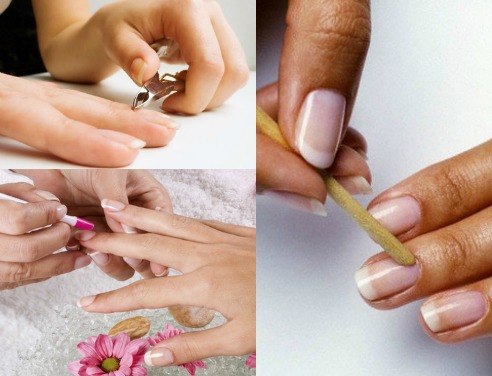
Two types of manicure have become widespread - classic edged (in which the cuticle is trimmed) and European unedged (when the cuticle is removed using a special acid or alkaline composition). You will find out what actions these two methods require by reading the information below.
- Classic edged manicure.
- To remove the cuticle in this case, you should thoroughly soften the skin by taking a fragrant warm bath. The procedure should begin by preparing this bath. Take a deep bowl and pour warm water into it. Add a small amount of fragrant liquid soap, jojoba oil to moisturize your nails, a couple of drops of your favorite essential oils - tea tree, grapefruit or orange, and a tablespoon of sea salt. You can remove the old coating from your nails using a liquid without acetone before or after taking a bath. The bath time is 10-15 minutes. This time is just enough to prepare the cuticle for subsequent processing. Instead of salt water and soap, you can heat a small amount of olive oil and soak your marigolds in it. In addition to softening, this procedure will allow the nails to be nourished with the vitamins necessary for health. If the cuticles are inflamed, you can take a bath by adding a decoction of oak bark to clean warm water. Adding lemon essential oil or lemon juice catalyzes the process of softening the cuticle, and therefore speeds up the bath time to 5 minutes.
- After the bath, dry your hands thoroughly with a dry towel. Now push back the cuticle with an orange stick and trim it with scissors. After this, apply a special cuticle oil, which should be rubbed in with massage movements. You can also use hand cream.
- European unedged manicure. This method does not involve softening the cuticle in a special bath, however, many supporters of unedged manicure still perform this procedure in order to give themselves pleasure during the procedure. In fact, the cuticle is immediately removed using a special cuticle softening composition, which is saturated with fruit acids or has an alkaline composition. The old coating should be removed later, since many fast-acting compounds have an aggressive effect on the nail plate. After a certain time - 1-2 minutes if it is a potent composition and 15-25 minutes if the cuticle softener remover is more gentle, the cuticle is removed with an orange stick.

The following products and tools can help with trimmed or untrimmed manicure.
- Cuticle scissors. Your arsenal of cuticle care products may include small cuticle scissors, the size of which does not exceed 9 centimeters. The tips of these scissors are sharp, specially sharpened for working with cuticles, so that they can easily go beyond the corners of the nails.
- Cuticle softener. This liquid may have a gel-like structure or look like diluted milk. This product is called a remover, the cost of which varies from 80 to 1200 rubles, depending on the manufacturer’s brand and the volume of the bottle. This product is applied with a special brush or directly from the tube, if its nose is sharp, onto the skin near the nails and left for a certain time. When working with remover, you should be careful not to overexpose the composition on your nails, otherwise this may lead to burns or dryness of the nail plates. When purchasing such a product, try to get rid of the cuticle on one nail and see if any allergic reaction occurs after using the product. Only after you are convinced that the product is safe can you begin to treat other fingers.
- Pumice stone. This is one of the options for manicure cuticle files. The thinnest file, called a pumice file, is designed to work with cuticles. Cuticle grinding is carried out after treatment with remover. The cost of a nail file starts from 60 rubles. The branded Shere&Nagel cuticle file can be purchased for 2,900 rubles.
- Crystal nail file. This file can also be used to work on cuticles. Fine grain and gentle coating allows you to file down the cuticle without damaging the nail. The cost of a crystal nail file is 200-400 rubles.
- Cuticle oil. These can be oil solutions of various vitamins, castor or olive oils. You can use them both during a manicure procedure, to soften the periungual skin, and every day to make the cuticle soft and slow down its growth.
- Cuticle trimmer. This tool has a V-shaped tongue. The tips are sharp and the middle is blunt. The middle of the trimmer's working surface presses down the cuticle, and the sharp edges trim it. Such a tool costs about one hundred rubles.

The correct choice of cuticle care method and products will help you make the manicure procedure enjoyable and avoid the occurrence of wounds near the surface of the nail plates. You can choose a file or remover to remove cuticles, or remain a supporter of trimmed manicure.


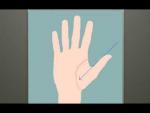

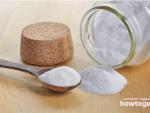


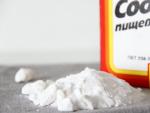
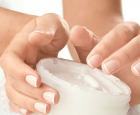 Nail care
Nail care Prom hairstyle for long hair
Prom hairstyle for long hair 18 wonderful New Year cards that even a child can make
18 wonderful New Year cards that even a child can make The best set of exercises for morning exercises
The best set of exercises for morning exercises